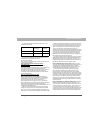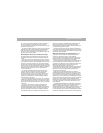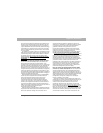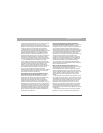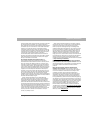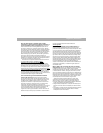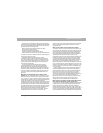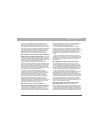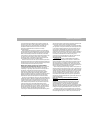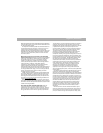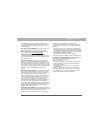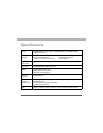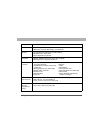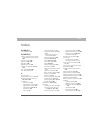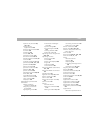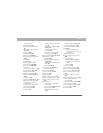
Using Your Treo 700P Smartphone 296
Regulatory information
for the Advancement of Medical instrumentation (AAMI). The
final draft, a joint effort by FDA, medical device manufacturers,
and many other groups, was completed in late 2000. This
standard will allow manufacturers to ensure that cardiac
pacemakers and defibrillators are safe from wireless
smartphone EMI.
FDA has tested hearing aids for interference from handheld
wireless smartphones and helped develop a voluntary standard
sponsored by the Institute of Electrical and Electronic Engineers
(IEEE). This standard specifies test methods and performance
requirements for hearing aids and wireless smartphones so that
no interference occurs when a person uses a “compatible”
smartphone and a “compatible” hearing aid at the same time.
This standard was approved by the IEEE in 2000.
FDA continues to monitor the use of wireless smartphones for
possible interactions with other medical devices. Should harmful
interference be found to occur, FDA will conduct testing to assess
the interference and work to resolve the problem.
Which other federal agencies have responsibilities
related to potential RF health effects? Certain agencies in
the Federal Government have been involved in monitoring,
researching or regulating issues related to human exposure to
RF radiation. These agencies include the Food and Drug
Administration (FDA), the Environmental Protection Agency
(EPA), the Occupational Safety and Health Administration
(OSHA), the National Institute for Occupational Safety and Health
(NIOSH), the National Telecommunications and Information
Administration (NTIA) and the Department of Defense (DOD).
By authority of the Radiation Control for Health and Safety Act
of 1968, the Center for Devices and Radiological Health (CDRH) of
the FDA develops performance standards for the emission of
radiation from electronic products including X-ray equipment,
other medical devices, television sets, microwave ovens, laser
products and sunlamps. The CDRH established a product
performance standard for microwave ovens in 1971 limiting the
amount of RF leakage from ovens. However, the CDRH has not
adopted performance standards for other RF-emitting products.
The FDA is, however, the lead federal health agency in
monitoring the latest research developments and advising other
agencies with respect to the safety of RF-emitting products used
by the public, such as cellular and PCS smartphones.
The FDA's microwave oven standard is an emission standard
(as opposed to an exposure standard) that allows specific levels
of microwave leakage (measured at five centimeters from the
oven surface). The standard also requires ovens to have two
independent interlock systems that prevent the oven from
generating microwaves the moment that the latch is released or
the door of the oven is opened. The FDA has stated that ovens
that meet its standards and are used according to the
manufacturer's recommendations are safe for consumer and
industrial use. More information is available from:
www.fda.gov/cdrh
.
The EPA has, in the past, considered developing federal
guidelines for public exposure to RF radiation. However, EPA
activities related to RF safety and health are presently limited to
advisory functions. For example, the EPA now chairs an Inter-
agency Radiofrequency Working Group, which coordinates RF
health-related activities among the various federal agencies with
health or regulatory responsibilities in this area.
OSHA is responsible for protecting workers from exposure to
hazardous chemical and physical agents. In 1971, OSHA issued a
protection guide for exposure of workers to RF radiation [29 CFR
1910.97]. However, this guide was later ruled to be only advisory
and not mandatory. Moreover, it was based on an earlier RF
exposure standard that has now been revised. At the present
time, OSHA uses the IEEE and/or FCC exposure guidelines for
enforcement purposes under OSHA's “general duty clause” (for
more information see:
http://www.osha-slc.gov/SLTC/radiofrequencyradiation/
index.html.
NIOSH is part of the U.S. Department of Health and Human
Services. It conducts research and investigations into issues
related to occupational exposure to chemical and physical
agents. NIOSH has, in the past, undertaken to develop RF
exposure guidelines for workers, but final guidelines were never
adopted by the agency. NIOSH conducts safety-related RF studies
through its Physical Agents Effects Branch in Cincinnati, Ohio.
The NTIA is an agency of the U.S. Department of Commerce
and is responsible for authorizing Federal Government use of the
RF electromagnetic spectrum. Like the FCC, the NTIA also has



